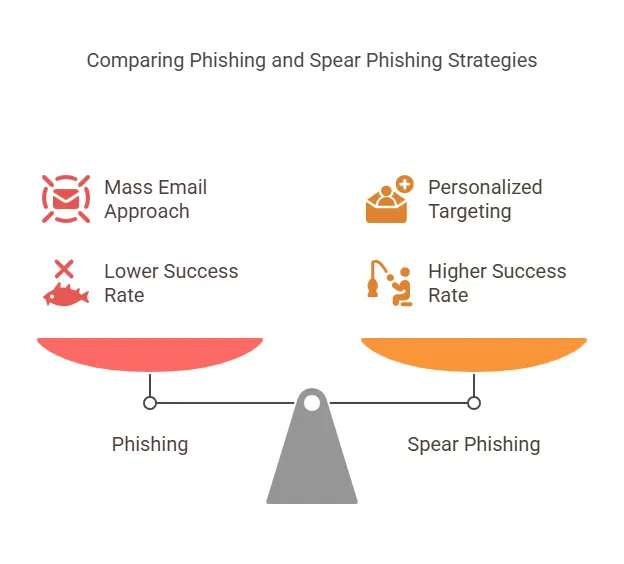Common Network Attacks
In the age of digitization, networks are the backbone of communication, data transfer, and system operations. However, this interconnectivity also opens doors to various cyber threats and attacks that can compromise the confidentiality, integrity, and availability of data. Understanding common network attacks is crucial to protecting systems, infrastructure, and sensitive information from malicious actors.This chapter explores the most prevalent network attacks, how they operate, their consequences, and strategies to defend against them.
Denial of Service (DoS) and Distributed DoS (DDoS)
What It Is:
A Denial of Service (DoS) attack floods a network or system with excessive traffic, rendering it slow or completely unavailable.
DDoS:
A Distributed DoS attack uses multiple systems (often botnets) to launch a coordinated attack.
Goal:
Disrupt services, crash websites, or make applications unusable.
Prevention:
Load balancers
Firewalls and rate limiting
DDoS protection services (e.g., Cloudflare, AWS Shield)
Man-in-the-Middle (MitM) Attack
What It Is:
An attacker intercepts communication between two parties without their knowledge, potentially altering or stealing data.
Goal:
Eavesdrop on confidential information or inject malicious content.
Prevention:
Use HTTPS (SSL/TLS)
Employ VPNs for encrypted communication
Enable certificate pinning and mutual TLS
Phishing and Spear Phishing

What It Is:
Phishing involves sending fraudulent emails or messages to trick users into revealing personal or login information.
Spear Phishing is a targeted version, often personalized for a specific individual or organization.
Goal:
Steal credentials, install malware, or trick users into transferring funds.
Prevention:
Email filters and anti-phishing tools
Security awareness training
Verifying suspicious requests
IP Spoofing
What It Is:
Attackers disguise their IP address to impersonate another system, making it difficult to trace or block them.
Goal:
Bypass authentication, redirect traffic, or carry out MitM or DoS attacks.
Prevention:
Packet filtering and deep packet inspection
Ingress/egress filtering
Secure routing protocols
DNS Spoofing / DNS Poisoning
What It Is:
Altering DNS records to redirect users to malicious websites.
Goal:
Trick users into visiting fake sites to steal login credentials or install malware.
Prevention:
DNSSEC (Domain Name System Security Extensions)
Encrypted DNS (DoH or DoT)
Regular DNS cache flushing
ARP Spoofing
What It Is:
In a local network, attackers send false ARP (Address Resolution Protocol) messages to link their MAC address with the IP address of a legitimate device.
Goal:
Intercept, modify, or block data meant for another device (often a MitM tactic).
Prevention:
Static ARP entries
Network segmentation
ARP monitoring tools
Sniffing
What It Is:
Capturing packets of data as they travel over the network using tools like Wireshark or tcpdump.
Goal:
Steal sensitive data like usernames, passwords, or credit card information.
Prevention:
Use encryption protocols like HTTPS and SSL/TLS
Secure Wi-Fi with WPA3
Disable promiscuous mode on network interfaces
Brute Force Attack
What It Is:
Repeated attempts to guess usernames or passwords through trial and error.
Goal:
Gain unauthorized access to user accounts or systems.
Prevention:
Implement account lockout policies
Use strong password requirements
Apply multi-factor authentication (MFA)
SQL Injection (SQLi)
What It Is:
Injecting malicious SQL statements into input fields to manipulate backend databases.
Goal:
Retrieve or modify sensitive database information, sometimes gaining full access.
Prevention:
Use prepared statements and parameterized queries
Sanitize user input
Employ web application firewalls (WAF)
Malware Injection
What It Is:
Inserting malicious code into a vulnerable application or server to exploit it.
Goal:
Gain control, steal data, or disrupt services.
Prevention:
Use antivirus and endpoint protection tools
Patch software regularly
Implement secure coding practices
Insider Threats
What It Is:
Malicious or negligent actions by individuals within the organization.
Goal:
Exfiltrate data, sabotage systems, or accidentally cause security breaches.
Prevention:
Role-based access control (RBAC)
Monitor user behavior
Educate employees about security policies
Social Engineering Attacks
What It Is:
Manipulating people into revealing confidential information or granting unauthorized access.
Goal:
Exploit human psychology rather than technical vulnerabilities.
Prevention:
Continuous user awareness training
Clear incident reporting channels
Simulated attack exercises
Understanding common network attacks is the first step toward creating a resilient and secure network infrastructure. From technical threats like IP spoofing and SQL injection to psychological tactics like phishing and social engineering, today’s attackers use a wide range of methods. Adopting a proactive, layered security approach that combines technology, policies, and awareness is the best defense.
